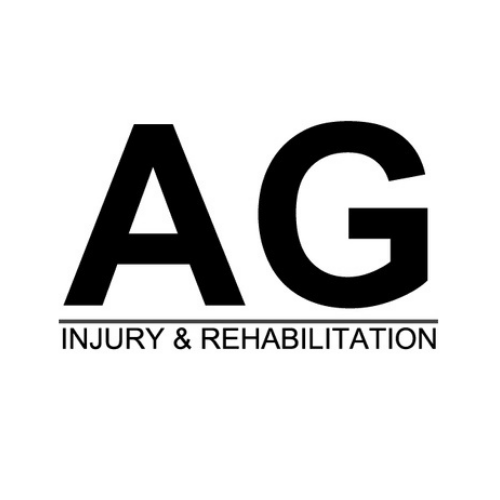Going through knee replacement surgery can be nerve wracking but also exciting in a strange way, knowing it's the solution to your daily struggles of knee pain. The process of getting a "new knee" can be overwhelming so it's important that you follow the correct procedures in order to ensure your operation is a success and you get the best outcome possible. It's important to let the healing process do its thing but there are some dos and don'ts that you should follow in order to regain your range of motion and make a full recovery.
Knee replacement surgery is a common procedure that can help relieve pain and restore function when the knee is severely damaged by arthritis or injury. Recovery from knee replacement surgery is different for everyone and depends on several factors, including whether you have one or both knees replaced, the condition of your other joints, and your overall health and fitness level before the operation. Generally, most patients use a walker for the first three weeks, and then transition to using a cane for another two to three weeks.
Physical therapy is a crucial part of recovering from knee replacement surgery. A physical therapist will teach you exercises to make your knee stronger and help it bend. It is important to do these exercises regularly. You may need to use a cane or walker for several weeks after the surgery. It will probably also be several weeks before you can drive. Most people who follow their recovery instructions can get back to nearly all of their normal daily activities within 3 to 6 weeks after surgery. However, it can take roughly 12 months to fully return to physically demanding activities. It is important to avoid high-impact activities or contact sports such as football, skiing, or lifting heavy weights throughout your knee replacement recovery period. They carry a high risk of falling, which can damage your new joint.
Knee replacement surgery is a common procedure that can help relieve pain and restore function when the knee is severely damaged by arthritis or injury. Recovery from knee replacement surgery is different for everyone and depends on several factors, including whether you have one or both knees replaced, the condition of your other joints, and your overall health and fitness level before the operation. By following these best practices and your surgeon's instructions, you can help ensure a smooth recovery after knee replacement surgery.
What not do to after knee replacement surgery
After knee replacement surgery, it is important to follow your orthopedic surgeon's instructions for a smooth recovery. There are a few things you should not do after having a knee replacement in order to make sure you have a smooth sailing recovery. Here are some things to avoid doing:
- Overexertion: Avoid high-impact activities such as running, jumping, or participating in contact sports, as these can put excessive stress on the knee joint and compromise the implant. Although you might well become impatient and wish to return to your previous activity level, it's importance to balance your rehabilitation with rest. Your physical therapist will help to guide you here and ease you back to completing everyday activities. It is fairly easy to not over exert yourself the first few days after your surgery, but the tricky part is when you start feeling better and begin to get impatient. This is where you need to think of the bigger picture and take your time.
- Sitting for long periods of time: Sitting for extended periods increases the risk of blood clots and additional swelling following surgery. It is recommended that you don’t sit for more than an hour at a time unless your leg is elevated to ensure you don't hold back the recovery process. You can set a timer on your phone or alarm clock to go off every hour. This will give you a nudge to get up and walk about. It doesn't have to be a huge walk - even walking to the kitchen to get a drink or nipping to the toilet can be enough to get your muscles moving and help with the circulation to and from your knee.
- Neglecting physical therapy: Active participation in physical therapy is key to a successful recovery. If you do not walk around frequently, change positions, and follow your prescribed knee exercises, you run the risk of developing joint stiffness. When following an exercise program in the early stages, it might be helpful to have a family member around to help supervise you during the first days, until you're comfortable completing the exercises alone. If you follow the guidance of your physical or occupational therapist you will likely be fine but don't forget you have undergone a surgical procedure so you should take some care when starting or working through the exercises to ensure a successful outcome.
- Ignoring pain or discomfort: Pain is expected after knee replacement surgery. It is important to manage your pain using the techniques recommended by your healthcare team. This may be through self-pain relief management techniques such as applying ice packs regularly, or it may be more along the lines of pain medicine. Each case is difference so it's important to discuss your symptoms and methods of pain control with your healthcare provider. Pain is normal... you've got a new joint in there! But there's a limit to what is to be expected. So if you are in severe pain or have any concerns, get it checked out.
- High-impact activities: Avoid exercises that involve twisting and jerking of the knee or high-impact sports that add too much stress to the knee, including football, soccer, basketball, baseball, gymnastics, running, jogging, aerobics classes, weightlifting, and skateboarding. You should always start with gentle exercise, basic movements and daily activities before progressing to more vigorous activities or sports. Small steps forwards are better than big steps backwards. Again this is fairly self explanatory in the early stages, but is more important later on through your recovery when you are feeling better. Speak with your physical or sports therapist about returning to sport. They may be able to put you through some more strenuous assessments to see if your knee is able to cope with the sport specific demands of what you are aiming to go back to.
- Not taking care of your wound: It’s important that the wound does not stay wet until it has thoroughly sealed and dried. A bandage on the wound can help avoid dirt and irritation. If your dressing is not looked after and regularly changed, you can get an infection in the wound which is severe cases can spread into your joint and impact recovery. Speak to your post-surgery team for tips on bathing etc while your surgical wound is still healing.
- Not elevating your knee: After joint replacement surgery, it is important to elevate your entire leg, down to the ankle, to avoid swelling. When elevating, your feet should be above the level of your heart and as straight as possible. Keeping inflammation at a minimum will not only speed up the healing process but it will also help with pain management.
- Not maintaining a healthy diet: A healthy diet can help with healing and recovery. Make sure to eat a balanced diet with plenty of fruits, vegetables, and lean protein. There are also a number of supplements that help with joint pain so do some research to see if they might suit your needs.
- Going back to work too soon: It is important to give yourself enough time to recover before returning to work. Make sure to discuss with your surgeon when it is safe to return to work.
By avoiding these and following your surgeon's instructions, you can help ensure a smooth recovery after knee replacement surgery and keep your recovery time low so you can get back to your normal activities as quickly as possible. Your recovery period will vary from that of others, so don't be too fixated on how quickly or slowly they return to physical activity. As long as you follow medical advice and appreciate you have gone through fairly major surgery so it is a gradual process to regain muscle strength and return to physical activities. Your physical therapy sessions are the most important part of recovery and not following the exercise guidance is also the most common reason recovery is delayed. As long as you follow the exercise, pain management and gradual progression guidance from your surgeon and physiotherapist, you'll be back to full fitness in no time.
Knee replacement surgery is a common procedure that can help relieve pain and restore function when the knee is severely damaged by arthritis or injury. Recovery from knee replacement surgery is different for everyone and depends on several factors, including whether you have one or both knees replaced, the condition of your other joints, and your overall health and fitness level before the operation. By following these best practices and your surgeon's instructions, you can help ensure a smooth recovery after knee replacement surgery.

